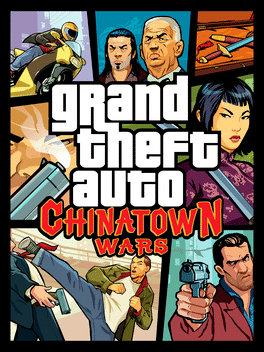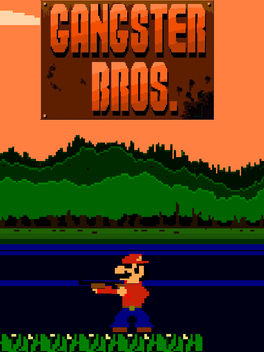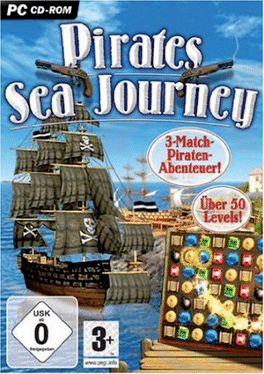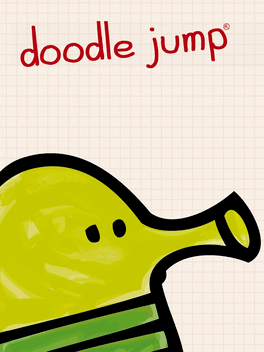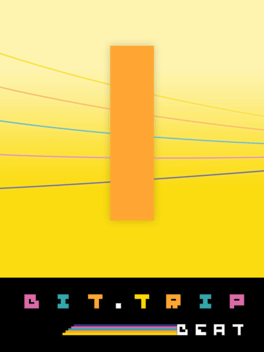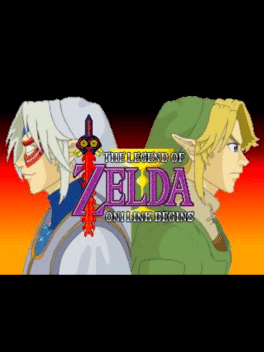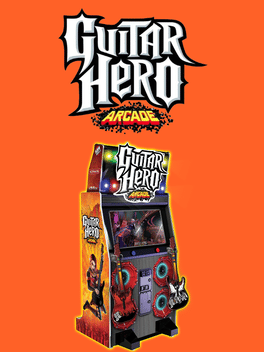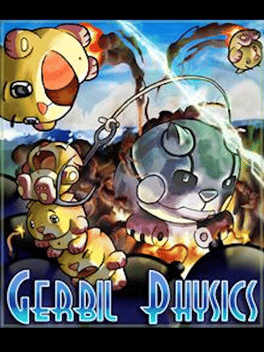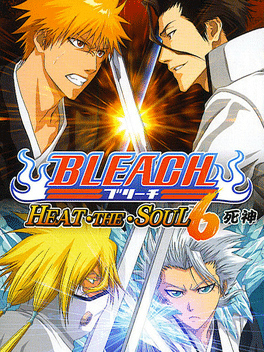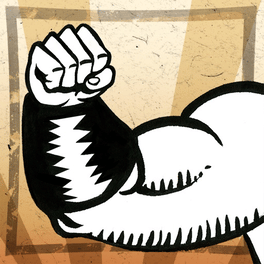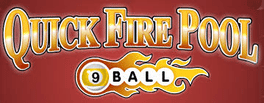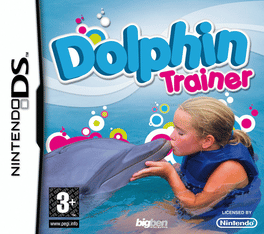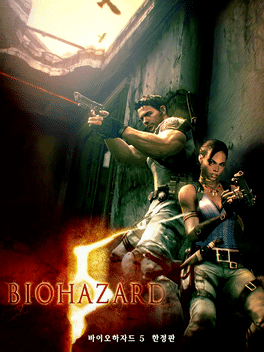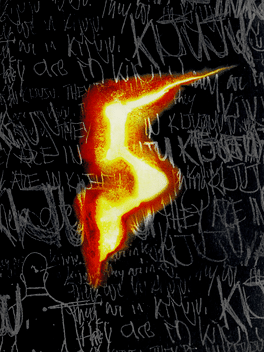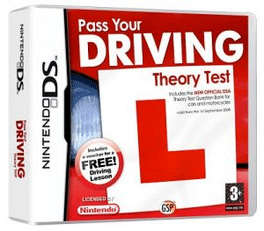New Games - Page 9827
-
Grand Theft Auto: Chinatown Wars
2009
star 8.3Grand Theft Auto: Chinatown Wars is an entirely original entry into the critically acclaimed Grand Theft Auto series, and brings a new level of interactivity to its sprawling open environments. With the use of the DS touch screen, players navigate their way through the streets as they uncover the truth behind an epic tale of crime and corruption within the Triad crime syndicate, delivering the unprecedented amount of depth that has become a true trademark of the franchise. -
Gangster Bros
2009
Gangster Bros
2009
Mario is on a hunt in the Gangster Bros Game! Help him fight his way through fire and vicious traps to rescue Ms. Princess Peach one more time! -
Pimp My Ride Street Racing
2009
Pimp my Ride: Street Racing was the second game related to the automotive show. -
Vacant Sky Vol. I: Contention
2009
Vacant Sky is an RPG released in three episodes following the death and rebirth of Auria Edith, a small-town girl whose violent and unexpected death turns her world upside down. After her equally unexpected resurrection, Auria finds herself drawn into the heart of a mystery involving a cult of masked cultists who will stop at nothing to make her their goddess. -
Pirates Sea Journey
2009
Pirates Sea Journey
2009
Sea Journey is a match three game. In between the stories told on the map, you will encounter battles. You must match three items on the puzzle to affect the outcome of the battle. Match cannonballs to fire on your enemy. Match coins to gain gold. Match scrolls to gain experience. Match red, blue or green gems to use talismans, when you get them. Later, match wheels to move your ship away to, hopefully, throw off your enemy's aim. You can match three times of your choice. After that, the enemy makes three matches. If you or your enemy match four or five of the same item, you or they will get one or two extra matches, respectively. After the battle, if you win, you can enter port to use your experience to upgrade you attack, defense, movement and/or gold-gathering abilities, install any talisman you have and/or, if you have the gold, upgrade to a better ship. Fighting battles also gains you treasure maps that lead to other islands where treasure is buried. To get the treasure, you must solve puzzles,some like a C -
Doodle Jump
2009
Doodle Jump
2009
Arcade BlackBerry OS Nintendo 3DS Windows Phone Android iOS Leapster Explorer/LeadPad Explorer Xbox 360 Nintendo DS Legacy Mobile Devicestar 7.1In Doodle Jump, the aim is to guide a four-legged animal called "The Doodler" up a never-ending series of platforms without falling. -
Bit.Trip Beat
2009
Bit.Trip Beat
2009
star 6.9From gameplay to visuals to music and imagination, Bit.Trip Beat is inspired by classic games in every way. Get sucked into a whole new world of sight and sound as you juggle beats and ride the vibe in this modern look at the beginning of it all. BIT. -
Guitar Hero Arcade
2009
-
Tibor: Tale Of A Kind Vampire
2009
When young Tibor is transformed from poor painter to vampire, his love for charming Agness vanquishes the evil from his heart. Throughout the game, you will visit different parts of the village collecting coins and other things that give you points, while trying to avoid or kill the enemies. -
The Nameless Mod
2009
The Nameless Mod
2009
The Nameless Mod is a third-party total conversion modification released for Deus Ex in 2009 by Off Topic Productions. It was in development for 7 years, during which it was highly anticipated. -
Gerbil Physics
2009
Gerbil Physics
2009
Gerbils have been imprisoned in blocks by the evil Toad King and turned into stacked monuments. The stacks must be knocked down in order to free the gerbils. In each level, the players uses a limited number of bombs, blasts, nukes or ropes to launch the gerbils beneath the level line. Additional points are awarded for using less resources than provided and for knocking down as many gerbils in a short amount of time. Gerbils in red blocks must never be touched. -
Bleach: Heat the Soul 6
2009
star 7.1Bleach: Heat the Soul 6 is the sixth game in the Heat the Soul series based on Tite Kubo's Bleach, which was released in Japan on May 14, 2009. It includes more Arrancar Resurrections like that of Nnoitora, Szayelapporo Grantz or Nel(Gamuza). The game has a new championship mode added in which you can fight tournament style similar to Bleach Soul Carnival and a customization mode exclusive to Heat the Soul 6. The game's story mode starts from the day Ichigo got his powers to the Espada/Soul Reaper showdowns to date in the anime. It boasts an amazing character roster consisting of 74 playable characters including Senna, Sojiro Kusaka, Dark Rukia, and the Visored and Tessai in their Soul Reaper uniforms from the "Turn Back the Pendulum" arc. Its opening theme is "Koyoi, Tsuki ga Miezu Tomo" by Porno Graffitti which was also used for Bleach: Fade to Black. -
Carnival Hammer
2009
Carnival Hammer
2009
Carnival Hammer is a simple iOS carnival-themed game. Players mimic a test-your-strength hammer strike with their device to send a virtual weight skyward—quirky, humorous, and designed for light, arcade-style fun. -
Dolphin Trainer
2009
Dolphin Trainer
2009
Become a friend to the dolphins! Adopt a dolphin and teach it incredible acrobatic tricks to save the aquatic park from financial collapse. -
Biohazard 5: Limited Edition
2009
Biohazard (Resident Evil) 5: Limited Edition is a Korean limited edition of Resident Evil 5. It came in a big box which contains: - The Game (regular edition with numbered sticker) - The movie Resident Evil Degeneration - The Making of RE5 DVD - Art Book -
Resident Evil 5: Steelbook Edition
2009
Chris Redfield returns to the series as the main character in Resident Evil 5, a game which takes place five years after Resident Evil 4. He is sent to Kijuju, Africa, where local agent Sheva Alomar joins him in the mission to apprehend Ricardo Irwing, who is trying to sell bio-weapons in the black market. Soon they are attacked by hordes of locals infected by an improved version of the "las plagas" parasite seen in Resident Evil 4, which they call "majini". As the story progresses, Chris discovers that some old fellows are behind the whole incident. -
Pass Your Driving Theory Test
2009
A educational game designed to help UK learner drivers pass their theory test. -
Animal Planet: Emergency Vets
2009
A game based around the Emergency Vets television programme on Animal Planet, in which the player must take on the role of a veterinarian treating various animals.

